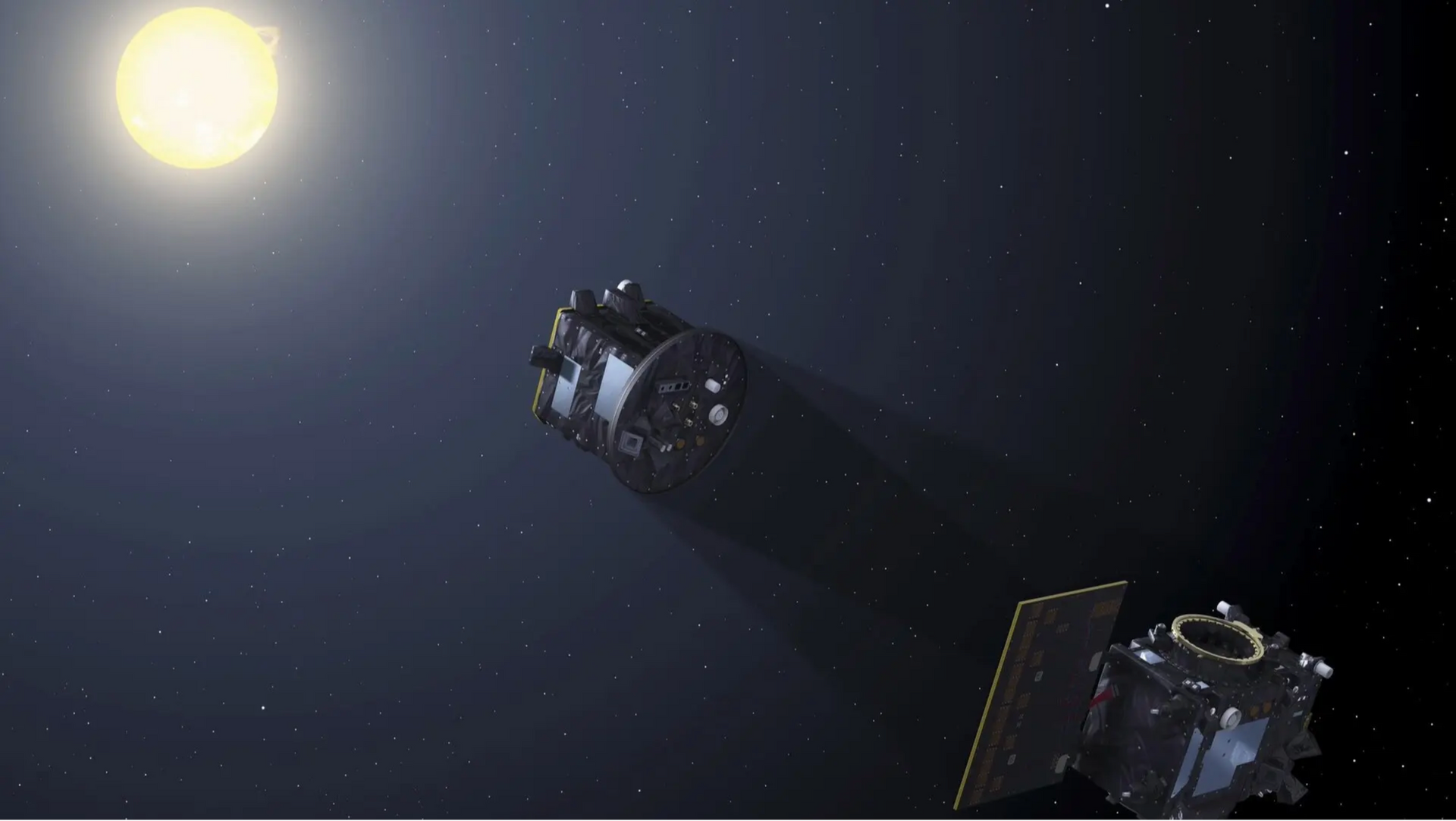The European Space Agency (ESA) is preparing to create an artificial solar eclipse so scientists can study the corona, one of the most complex and difficult-to-observe parts of the Sun.

To do this, they hope to fly two separate spacecraft, 150m apart and in line, so that one satellite (called a “photocontainer”) blocks out all but the corona, while the other satellite observes with a coronameter.
How is an artificial solar eclipse created by science?
The two mission satellites will have to fly "in formation down to the millimeter," using satellite positioning, radio-based satellite links, cameras and laser beams reflected between them.
The flight will take place autonomously at an orbital altitude of approximately 60,000 km. At this altitude, magnetic, gravitational and atmospheric disturbances will have little effect on the orbiting satellites. After operating for the duration of the mission, the satellite pair will drift passively and safely.
ESA said one of the goals of the mission, called Proba-3, is to measure the total energy output of the Sun to inform climate models. The sunspot and coronagraph satellite are undergoing pre-flight testing at ESA's Redwire Space facility in Kruibeke, Belgium.
According to the press release, each orbit of the Proba-3 mission lasts approximately 19 hours and 36 minutes. Each orbit will have the opportunity to create an artificial eclipse for up to six hours. This extended observation time will allow for deeper study of the corona and new insights into the Sun’s fiery atmosphere.
There are coronagraph instruments on Earth and in space, but ESA says they are limited in their effectiveness because light tends to diffract, or spill over the edge of the coronagraph. Placing the coronagraph farther away would help, but building it into a single spacecraft would be impractical.
Astronomers have been puzzled by the Sun’s corona since the 19th century. The corona is known to soar in temperature to 2 million degrees Kelvin, while the surface below (about 1,000 miles above the surface) is much colder. Scientists are trying to figure out what makes the corona so hot.
The corona does not produce or reflect much light, despite its extremely high temperature. For this reason, the corona is only visible during a total solar eclipse.
Furthermore, the corona influences space weather by generating solar winds. These solar winds are sometimes accompanied by coronal mass ejections, also known as solar storms, which have potential impacts on Earth, from creating stunning auroras to damaging orbiting satellites and affecting terrestrial power and communications networks.
ESA hopes to launch the Proba-3 mission in September. The agency's announcement comes as most Americans are looking forward to seeing the total solar eclipse on April 8.
TH (Synthesis)